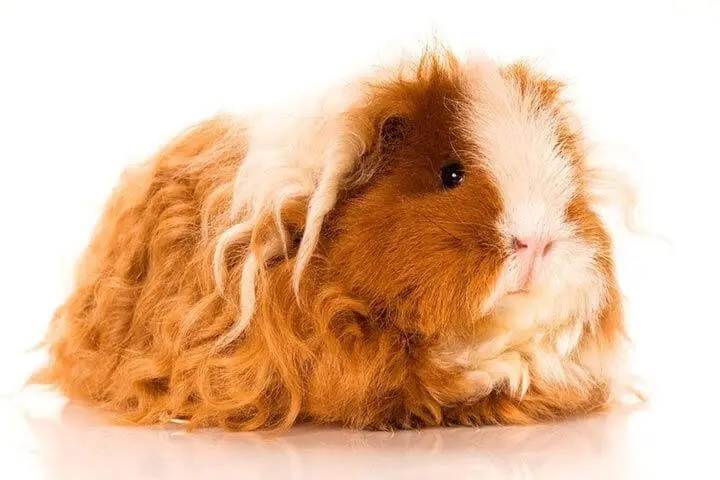Texel Guinea Pigs are a unique and captivating breed with long, curly coats, known for their docile temperament and suitability for experienced pet owners.
Origins and Distinctive Features
Texel Guinea Pigs originated in the 1980s from breeding a Silkie Guinea Pig with a British Rex. Recognized in 1998 by the American Cavy Breeders Association, they are distinct for their long, curly fur, contrasting with the Silkie’s long, straight fur.
To learn more about other guinea pig breeds visit A Guide to Guinea Pig Breeds: Finding Your Perfect Match.
Physical Characteristics
- Size: Ranges from 1½ to 2½ pounds, with a body length of 8 to 10 inches.
- Coat Type: Long and curly, covering the entire body with slightly shorter hair around the head and face.
- Color Variations: Available in a variety of colors including white, gold, black, brown, and mixed patterns.
Temperament
Texel Guinea Pigs are known for their calm and affectionate personality. They enjoy interaction, are known to be vocal, and can be more mischievous than other breeds, requiring close supervision during play.
Pros and Cons
Pros:
- Calm and affectionate, making them great for interaction and companionship.
- Unique and attractive appearance due to their long, curly coat.
Cons:
- Require extensive grooming, including daily brushing and regular bathing.
- May be prone to specific health issues like eye infections, obesity, heatstroke, and skin issues.
Lifespan
They typically live between 5 to 10 years, with proper care and attention.
Care Requirements
- Grooming: Daily brushing to maintain the coat and prevent matting, knots, or tangles. Frequent bathing and professional grooming are recommended.
- Diet: Should consist of high-quality pellets, a continuous supply of hay, fruits, and vegetables. Monitor food intake to prevent obesity.
- Exercise Requirement: Provide enrichment and play to keep them mentally and physically active. They enjoy tunnels, cardboard boxes, and obstacle courses.
- Housing: Require a clean, spacious, and well-ventilated habitat. A cage of at least 30 x 60 inches is recommended, with dry bedding changed regularly to prevent soiling of their long fur.
- Health Considerations: Monitor for common health issues like respiratory infections, urinary problems, pododermatitis, and vitamin C deficiency. Regular veterinary check-ups are essential.
Where to Get One
- Rescue Centers: Adoption from rescue centers is encouraged, offering a loving home to a pet in need.
- Reputable Breeders: Ensure breeders are knowledgeable about the breed and provide healthy, well-cared-for guinea pigs.
Interesting Fact
Texel Guinea Pigs were once a rare breed but have gained popularity due to their unique appearance and affectionate nature. They require more time and attention than other breeds but make rewarding pets for those willing to invest in their care.

